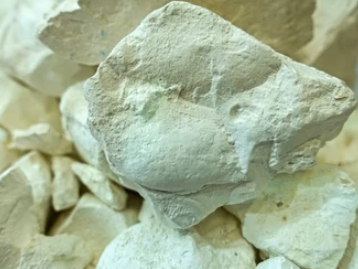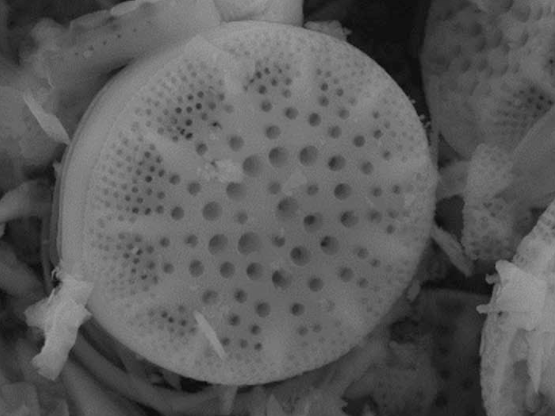Diatomite Characterization Using the iEM Platform

Diatomite is a very attractive natural material characterized by high porosity, high permeability, and large surface area. At the iEM Platform, Creative Biostructure supports the use of state-of-the-art instrumentation for the characterization of morphology, chemical composition, and crystalline structure of both natural and man-made solid materials. Here we apply advanced electron microscopy (EM) techniques to characterize and analyze diatomite and diatomite-based materials. Our services include the investigation of diatomite and diatomite-based materials microstructure, detection of mineral impurities in diatomite ores, comparison of crude and treated diatomite, but not limited to them.
Diatomite
Diatomite, also called diatomaceous earth, is generally 10-200 nm and consists of fossilized diatom (a single-celled aquatic plant, having silica cell walls) remains of various shapes and sizes. As a kind of sedimentary siliceous rock, diatomite is soft, friable, fine-grained, weakly, porous, well cemented, and light in weight. In addition, diatomite has other valuable characteristics that make it a very attractive natural material, including low thermal conductivity, low bulk density, low solubility in water, and inert chemical reactivity with most liquids and gases. Due to its unique physical and chemical properties, low price, and high abundance, diatomite has a number of applications such as materials for filtration, industrial-scale absorption materials, obtaining humidity control materials, insulating materials, initial materials for production of prolonged-release drug carriers, and so on. For example, several studies have been conducted on diatom frustules as natural silica particles for engineering and biomedical applications. The unusual three-dimensional biosilica structure of diatoms make them ideal candidates for multifunctional scaffolds.
Service Offering at the iEM Platform
 SEM examination of raw diatomite. (Reka, A. A., et al. 2021)
SEM examination of raw diatomite. (Reka, A. A., et al. 2021)
- Investigation of various frustules and entire skeletal structures of diatoms particles
Based on scanning electron microscopy (SEM), we can reveal the biogenic identity of the raw diatomite, including diatom frustules and entire skeletal structures of diatoms algae. By combining with energy-dispersive X-ray spectroscopy (EDS), the information of the chemical component of diatomite can be quantitatively determined. Our scanning electron microscopy/ energy-dispersive X-ray spectroscopy (SEM/EDS) allows the analysis of the skeletons and the associated clayey minerals. Moreover, we provide transmission electron microscopy (TEM) to complement SEM analysis of diatomite samples. TEM analysis enables the textural and morphological analysis of the mineral material, further depicting the presence of micro- and nanostructures with pores.
- Detection of mineral impurities in diatomite ores
Diatomite is a commonly used material in the industry. However, diatomite has a problem in the production process, that is, the raw material precipitation contains a large number of mineral impurities, such as carbonates. Our advanced EM techniques can facilitate the characterization and analysis of mineral impurities and their relationship to diatomite.
- Comparison of crude and treated diatomite
In addition, we can characterize diatomite using EM techniques in order to compare the raw diatomite with treated diatomite. Understanding the effects of various treatments on the surface properties of diatomite particles can contribute to the improvement of porous structural properties. Our services are flexible and customized to facilitate the development of new diatomite and diatomite-based materials.
For more information about diatomite characterization and analysis, our techniques, or instrumentation, please don't hesitate to contact us. We look forward to talking to you.
- Reka, A. A., et al. (2021). "Diatomaceous Earth: Characterization, thermal modification, and application." Open Chemistry, 19(1), 451-461.

